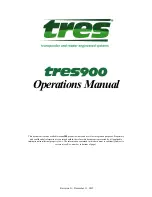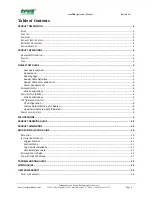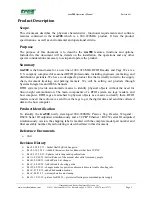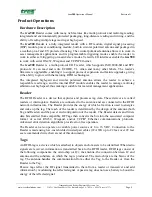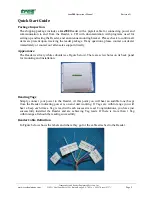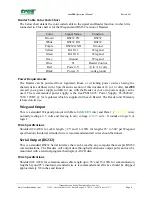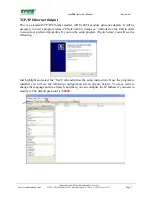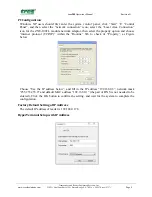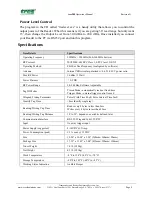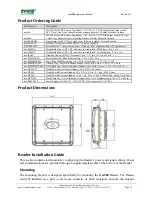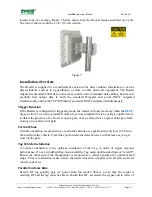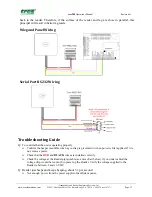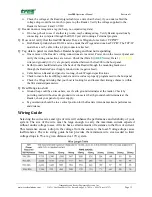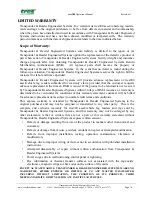
tres900
Operations Manual
Revision G
www.tresrfsolutions.com
Transponder and Reader Engineered Systems, Inc
2142 O’Neal Lane Suite 354
▪
Baton Rouge, LA 70816
▪
888.574.tres (8737)
Page 4
Product
Operations
Hardware
Description
The
tres900
Reader comes with many rich features like multi-protocol and multi-tag reading,
integrated and environmentally protected packaging, long-distance reading and writing, and the
ability of reading multiple tags moving at high speed.
The
tres900
Reader is a fully integrated reader with a RF module, digital signal processing
(DSP) module, power conditioning module, built-in circular polarized antenna and packaged in
a weather-proof and UV protected housing. The circular polarized antenna allows it to work in
asset management applications and its programmable triggering modes enable the reader to
work in either self-triggering or master/slave modes. Versatile I/O interfaces enable the
tres900
to work with serial RS-232, Wiegand, and TCP/IP Ethernet.
The
tres900
Reader is a multi-protocol UHF reader, which supports ISO18000-6B and EPC
protocols. It can read and write UCODE, TI, Alien and many other labels. The reader’s
firmware is upgradable, enabling it to support protocol expansion and feature upgrades, giving
it the ability to grow with the maturing RFID technologies.
The integrated high-gain and circular polarized antenna allows the reader to achieve a
respectable read range, and the internal DSP module enables the reader to manage multi-tag
arbitration at high speed, thus making it suitable for material management applications.
Reader
The RFID Reader is a device that captures and processes tag data. These devices are called
readers or interrogators. Readers are connected to the antenna and are connected to the RFID
network infrastructure. The Reader provides the energy of which a fraction is used to energize
and wake up the tag. The reach of the reader is determined by the design of the antenna (both
Tag and Reader) and the power and configuration of the reader. The Reader detects and filters
data bits emitted from compatible RF Tags then converts the bits into the associated computer
format of serial RS232, Wiegand, and/or TCP/IP Ethernet communications protocols.
Advanced error detection algorithms provide error-free operation.
The Reader can also operate on variable power sources of 8 to 16 VDC. Connection to the
Reader is made using low-cost shielded twisted pair cables (22 AWG up to 22 feet, over 22 feet
see recommended wire chart at end of this document).
Tags
An RFID-tag is a device which is attached to objects and/or assets to be identified. When radio
signals are received, information is transmitted back to the RFID reader. RFID tags consist of
the following components: the microchip (or IC), the antenna, the connection between IC and
antenna and the substrate on which the tag is produced. The microchips are the brains of the
tag. The antenna handles the communication from either the Tag to the Reader or from the
Reader to the Tag.
Passive tags reflect the RF signal transmitted to them from a reader or transceiver and add
information by modulating the reflected signal. A passive tag does not use a battery to boost the
energy of the reflected signal.

